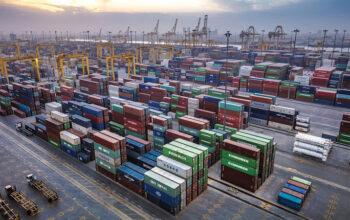Business News:
Following Israel’s strike on Iran, oil prices jumped over 10%, sparking concerns of a wider Middle East conflict. The strategic Strait of Hormuz faces increased risks, disrupting shipping routes and raising freight costs. Global markets now prepare for supply challenges, inflation pressures, and economic uncertainty amid escalating regional tensions.
Brent crude approached $100 per barrel before easing slightly. While the situation is serious, analysts suggest the market reaction will hinge on how the conflict evolves—especially whether it leads to physical disruptions in oil shipments.
The Strait of Hormuz: A Strategic Chokepoint Under Pressure
Tensions in the Arabian Gulf have reverberated through global shipping markets. The Strait of Hormuz is one of the most strategically significant maritime corridors in the world, with approximately 18 to 19 million barrels of oil and petroleum products flowing through it each day.
Although a complete blockade is still considered unlikely, the risk alone has altered freight dynamics. Rates for very large crude carriers (VLCCs) from the Middle East to Asia surged over 20% in a single day. Shipowners have slowed charter activity and are reassessing routes as war-risk premiums and insurance costs rise—some reaching as high as $8 per barrel.
Shipping Disruption and Rising Freight Costs
Beyond crude oil, freight rates for refined products like gasoline, diesel, and jet fuel have also jumped. Prior to the conflict, transporting 90,000 tonnes of clean fuel west of the Suez Canal cost $3.3–$3.5 million; now, quotes are nearing $4.5 million. Some shipowners are even rerouting vessels to avoid the Gulf, putting added strain on global logistics networks.
Maritime authorities have warned of navigation risks including missile threats and electronic jamming, prompting vessels to adopt heightened security protocols and delay schedules. Though a full-scale shutdown of the Strait is improbable, targeted threats or harassment could still significantly disrupt traffic.
Economic Implications: Inflation, Markets, and Supply Chains
The impact on the global economy could be severe if the situation escalates. Unlike 2022—when post-pandemic recovery boosted demand during the Russia-Ukraine conflict—the current global economy is more fragile, with central banks attempting to curb inflation and lower interest rates.
If oil prices rise above $100 and remain elevated, inflation in advanced economies could increase by up to 1%, adding pressure on central banks and potentially stalling monetary easing efforts.
However, some experts caution against overreaction. Instability in the Middle East is not new, and if the conflict is contained without major infrastructure damage or shipping disruption, prices could normalize quickly. Still, the combination of geopolitical volatility and economic fragility means markets remain on edge.
Outlook: High Alert, Limited Clarity
As events unfold, much depends on the scale and duration of the conflict. While many oil-producing nations have spare capacity that could stabilize markets, persistent uncertainty in the Strait of Hormuz and across Gulf shipping routes is already reshaping global energy dynamics—with lasting effects likely to be felt in trade, inflation, and supply chains worldwide.





